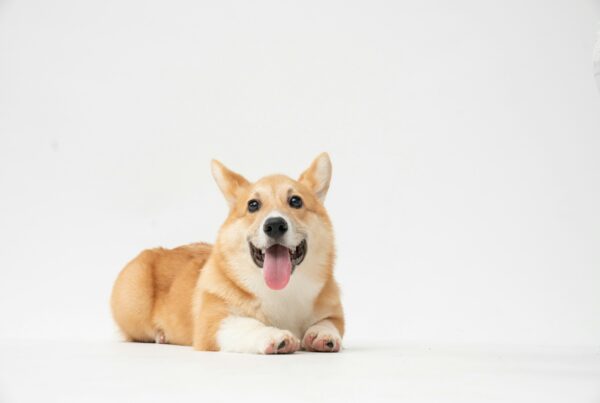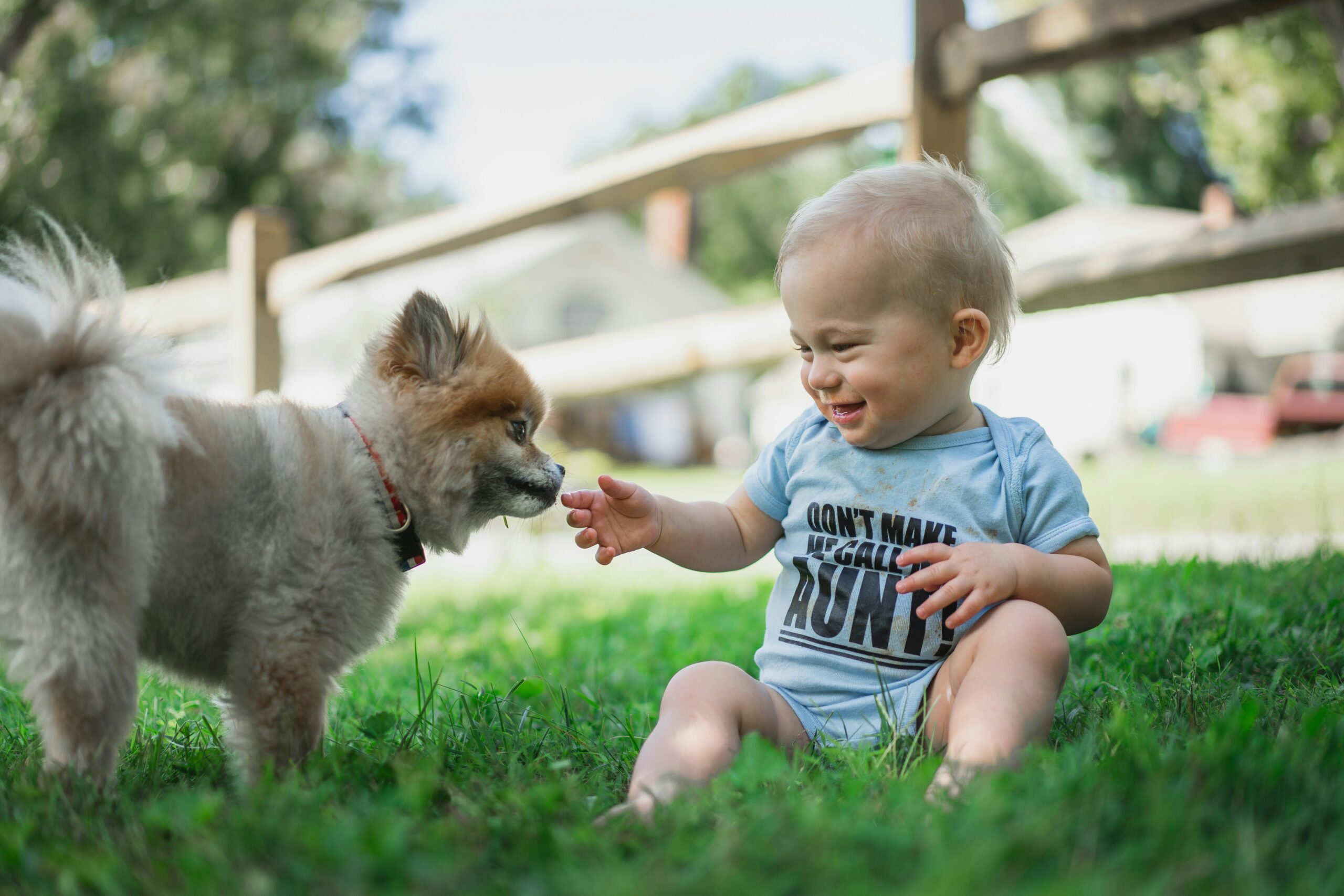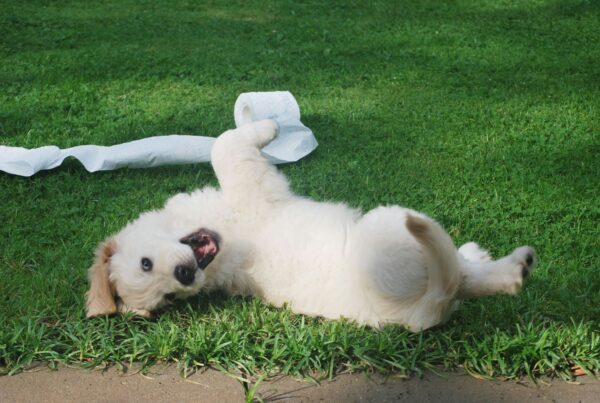Every morning, my pack of five goes through a stretching routine. They begin with play bows, tail tips wiggling high overhead. Then they push out their chests and extend their back legs so far I think surely, this time, one of them is going to fall over. Shelby, my Pit Bull mix, is known for the “ski jump,” in which she thrusts out her back legs like a skier flying off the ramp. But somehow, they all manage to stick the landing with a grace and ease that even our cats envy. Finally, my canine Zen masters look at me with relaxed, happy grins, eager to go outside and greet the birds and squirrels. If this routine goes on at your house too, then your dog is a natural at doga, or yoga for dogs. “Doga is a partner yoga class that people do with their dogs,” says Kari Harendorf, owner of East Yoga in New York City and star of Animal Planet’s “K9 Karma.” The long-time doga enthusiast, who has partnered with her 10-year-old Husky, Charlie, for many years, began teaching doga classes in 2004. “It’s very much like a dance, using the dogs as we would use a traditional dance partner … just as a teacher might assist you to push deeper into the pose.” Yoga is a Sanskrit term that means “joining,” or “uniting.” It’s an ancient physical and mental discipline originally developed in India, where it also incorporates Hindu philosophy. Outside of India, yoga is more commonly viewed as a form of exercise. Humans who practice yoga are either a yogi (male) or yogini (female). The canine equivalent is a dogi (male) or dogini (female). “Like yoga, doga balances, harmonizes, purifies and transcends the body and mind of the practitioner,” says doga teacher Madhavi Bhatia. “What makes doga unique is the practice and benefits that create a harmony and synchronization of energy flow between the owner and dog.” Though I’m a restless sort who has avoided yoga for superficial reasons (who has time to sit still and think of nothing?), I was instantly attracted to doga. After all, isn’t anything more fun and interesting when you can bring your dog? I signed up my 10-year-old Catahoula, Desoto, for doga class at Wiggles ‘n’ Wags in Lombard, Ill. We were joined by my friend Barb Scalise and her six-year-old Vizsla, Penny. We each brought mats for ourselves and our dogs, treats and water. Neither of us had prior yoga experience. Bhatia, our instructor, first started teaching yoga 14 years ago in her native India. She only recently began teaching doga classes, but had a lifetime of experience with dogis and doginis. “As a child, I observed dogs, with curiosity about their movements,” says Bhatia. “It was a very subconscious, playful start of doga for me.” I recognized some of the postures at our very first class. My dogs’ morning play bow corresponds to the “downward-facing dog” posture, perhaps the most natural pose for all dogs. What I described as Shelby’s “ski jump” is the popular “cobra” pose. But observing a dog pose naturally and helping him into a pose—or using him to support your own—are very different things. I chose Desoto to be my doga partner because I assumed that, being a senior, he would be happy to lie down on the mat next to me and allow me to gently manipulate his legs and head into the various poses. We know what happens when one assumes. Social butterfly that he is, Desoto was so delighted to be with other people and dogs that he could barely sit still, much less do downward-facing dog. I brought out a bag of treats to help him focus, which it did. But I didn’t count on the waterfall of drool that poured all over my brand-new yoga mat. And did I mention that he weighs 72 pounds and is all muscle? Meanwhile, Barb and her petite, well-behaved Penny were smoothly transitioning from pose to pose as though they had been doing it for years.
This article was abridged and resposted from http://www.thebark.com/content/doga |
Doga: Yoga for You and Your Dog
Yoga + dog = benefits for all
Share




